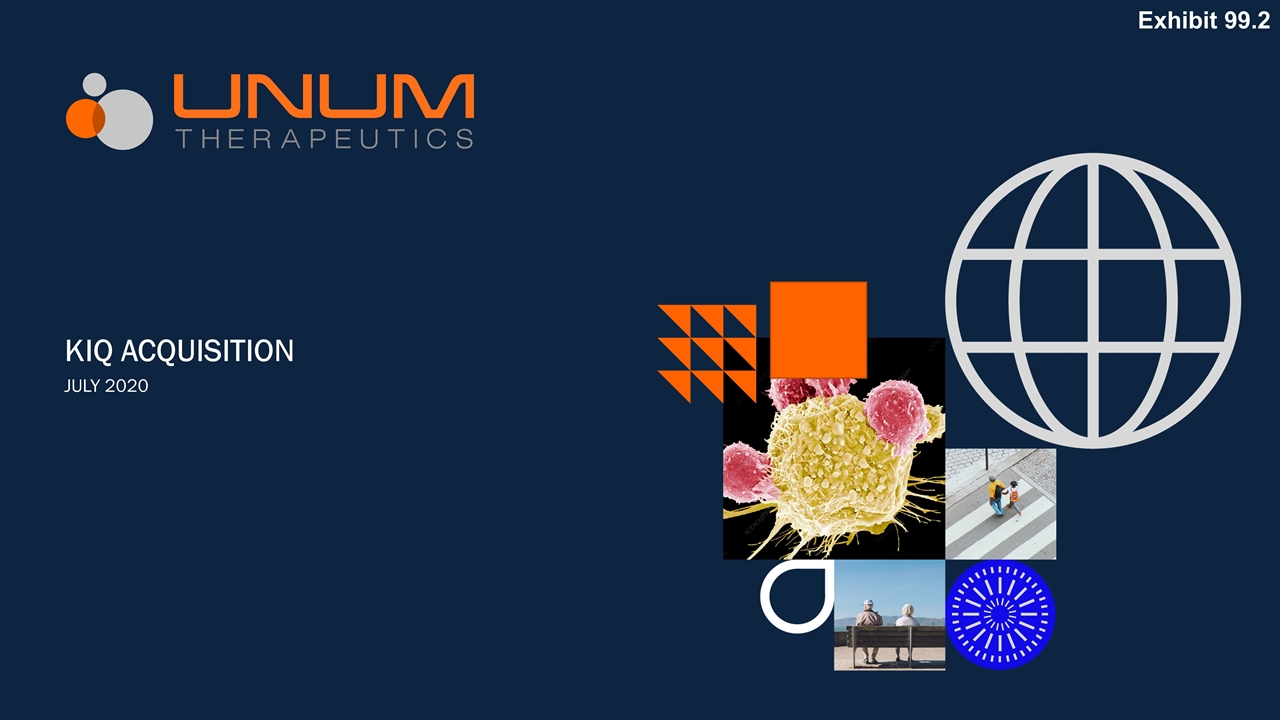
KIQ aCQUISITION July 2020 Exhibit 99.2
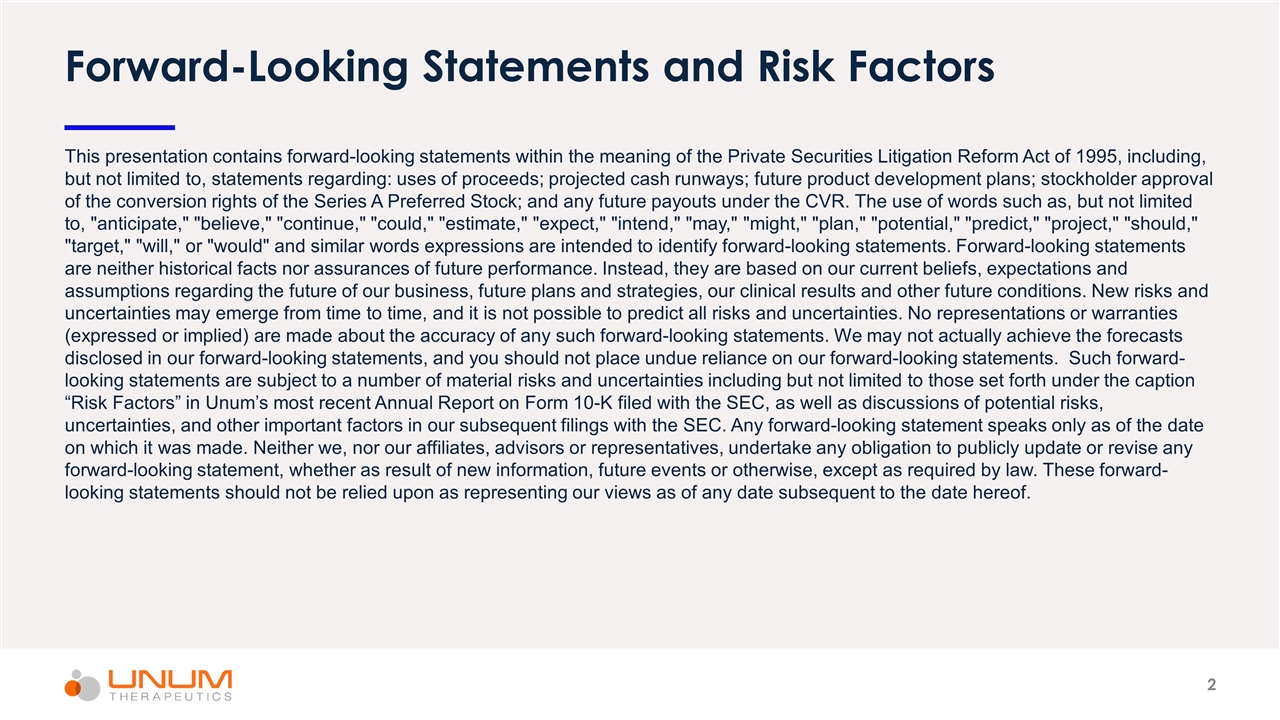
Forward-Looking Statements and Risk Factors This presentation contains forward-looking statements within the meaning of the Private Securities Litigation Reform Act of 1995, including, but not limited to, statements regarding: uses of proceeds; projected cash runways; future product development plans; stockholder approval of the conversion rights of the Series A Preferred Stock; and any future payouts under the CVR. The use of words such as, but not limited to, "anticipate," "believe," "continue," "could," "estimate," "expect," "intend," "may," "might," "plan," "potential," "predict," "project," "should," "target," "will," or "would" and similar words expressions are intended to identify forward-looking statements. Forward-looking statements are neither historical facts nor assurances of future performance. Instead, they are based on our current beliefs, expectations and assumptions regarding the future of our business, future plans and strategies, our clinical results and other future conditions. New risks and uncertainties may emerge from time to time, and it is not possible to predict all risks and uncertainties. No representations or warranties (expressed or implied) are made about the accuracy of any such forward-looking statements. We may not actually achieve the forecasts disclosed in our forward-looking statements, and you should not place undue reliance on our forward-looking statements. Such forward-looking statements are subject to a number of material risks and uncertainties including but not limited to those set forth under the caption “Risk Factors” in Unum’s most recent Annual Report on Form 10-K filed with the SEC, as well as discussions of potential risks, uncertainties, and other important factors in our subsequent filings with the SEC. Any forward-looking statement speaks only as of the date on which it was made. Neither we, nor our affiliates, advisors or representatives, undertake any obligation to publicly update or revise any forward-looking statement, whether as result of new information, future events or otherwise, except as required by law. These forward-looking statements should not be relied upon as representing our views as of any date subsequent to the date hereof.
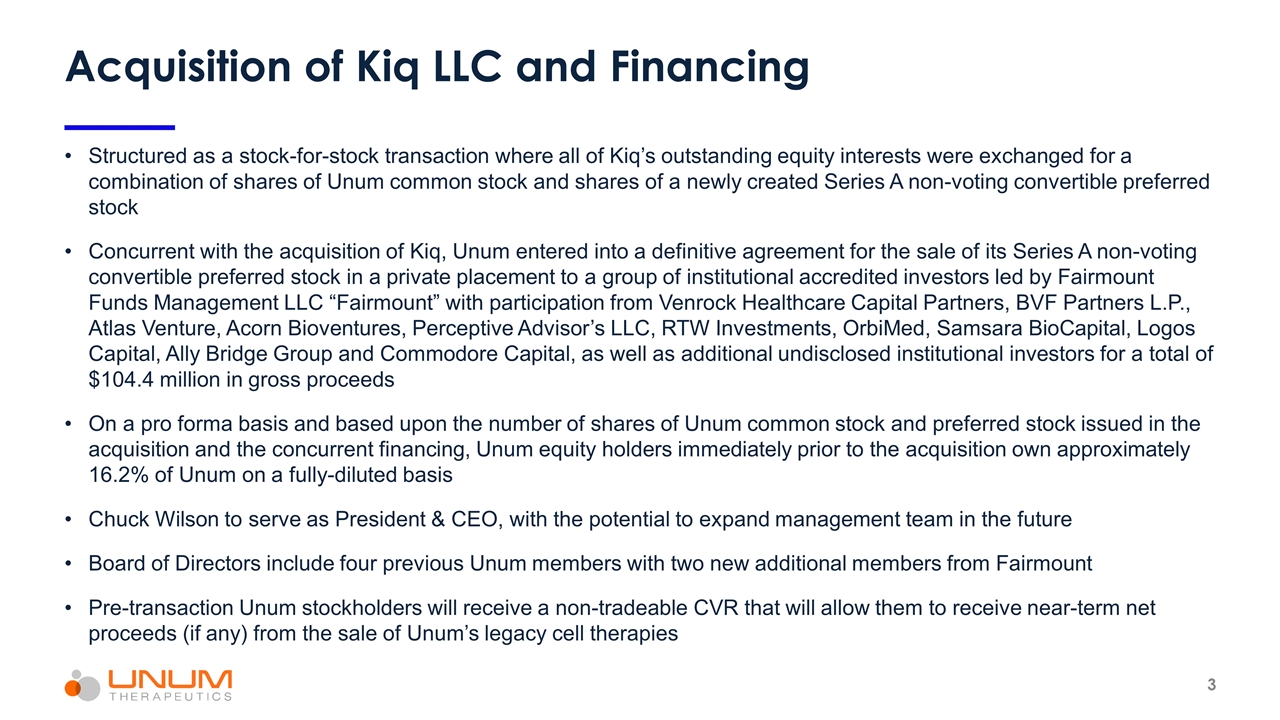
Acquisition of Kiq LLC and Financing Structured as a stock-for-stock transaction where all of Kiq’s outstanding equity interests were exchanged for a combination of shares of Unum common stock and shares of a newly created Series A non-voting convertible preferred stock Concurrent with the acquisition of Kiq, Unum entered into a definitive agreement for the sale of its Series A non-voting convertible preferred stock in a private placement to a group of institutional accredited investors led by Fairmount Funds Management LLC “Fairmount” with participation from Venrock Healthcare Capital Partners, BVF Partners L.P., Atlas Venture, Acorn Bioventures, Perceptive Advisor’s LLC, RTW Investments, OrbiMed, Samsara BioCapital, Logos Capital, Ally Bridge Group and Commodore Capital, as well as additional undisclosed institutional investors for a total of $104.4 million in gross proceeds On a pro forma basis and based upon the number of shares of Unum common stock and preferred stock issued in the acquisition and the concurrent financing, Unum equity holders immediately prior to the acquisition own approximately 16.2% of Unum on a fully-diluted basis Chuck Wilson to serve as President & CEO, with the potential to expand management team in the future Board of Directors include four previous Unum members with two new additional members from Fairmount Pre-transaction Unum stockholders will receive a non-tradeable CVR that will allow them to receive near-term net proceeds (if any) from the sale of Unum’s legacy cell therapies
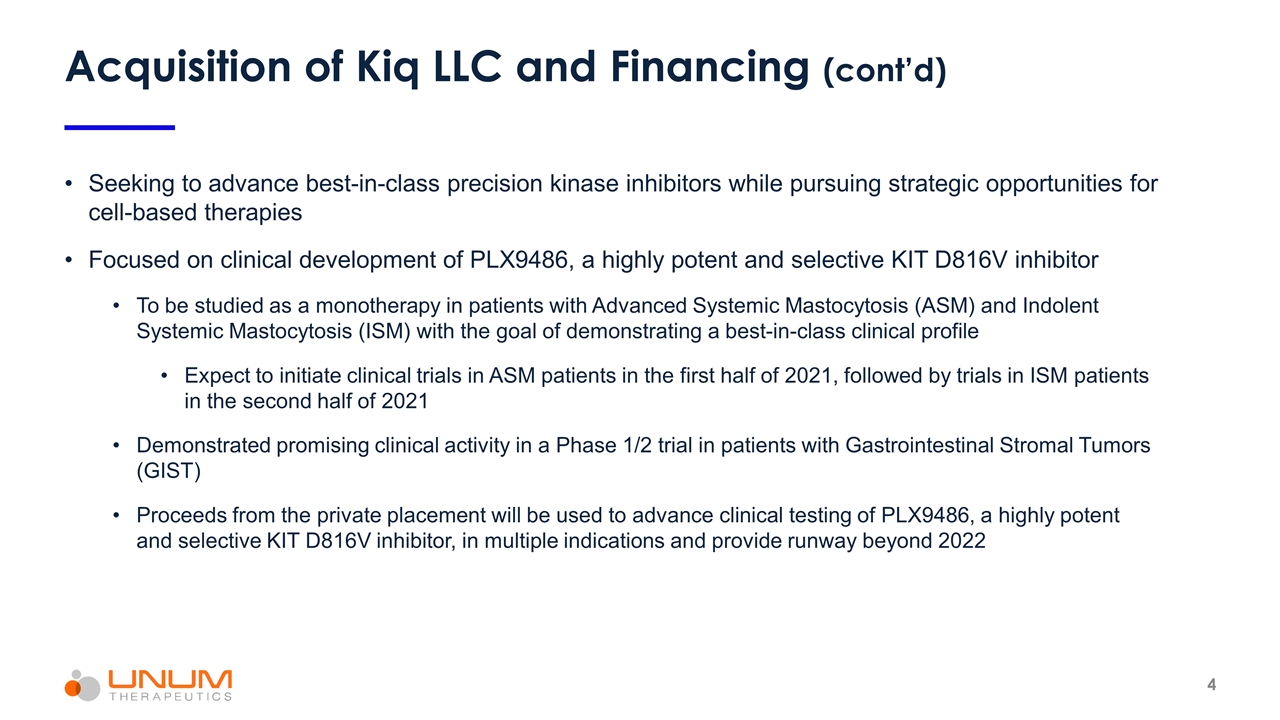
Acquisition of Kiq LLC and Financing (cont’d) Seeking to advance best-in-class precision kinase inhibitors while pursuing strategic opportunities for cell-based therapies Focused on clinical development of PLX9486, a highly potent and selective KIT D816V inhibitor To be studied as a monotherapy in patients with Advanced Systemic Mastocytosis (ASM) and Indolent Systemic Mastocytosis (ISM) with the goal of demonstrating a best-in-class clinical profile Expect to initiate clinical trials in ASM patients in the first half of 2021, followed by trials in ISM patients in the second half of 2021 Demonstrated promising clinical activity in a Phase 1/2 trial in patients with Gastrointestinal Stromal Tumors (GIST) Proceeds from the private placement will be used to advance clinical testing of PLX9486, a highly potent and selective KIT D816V inhibitor, in multiple indications and provide runway beyond 2022
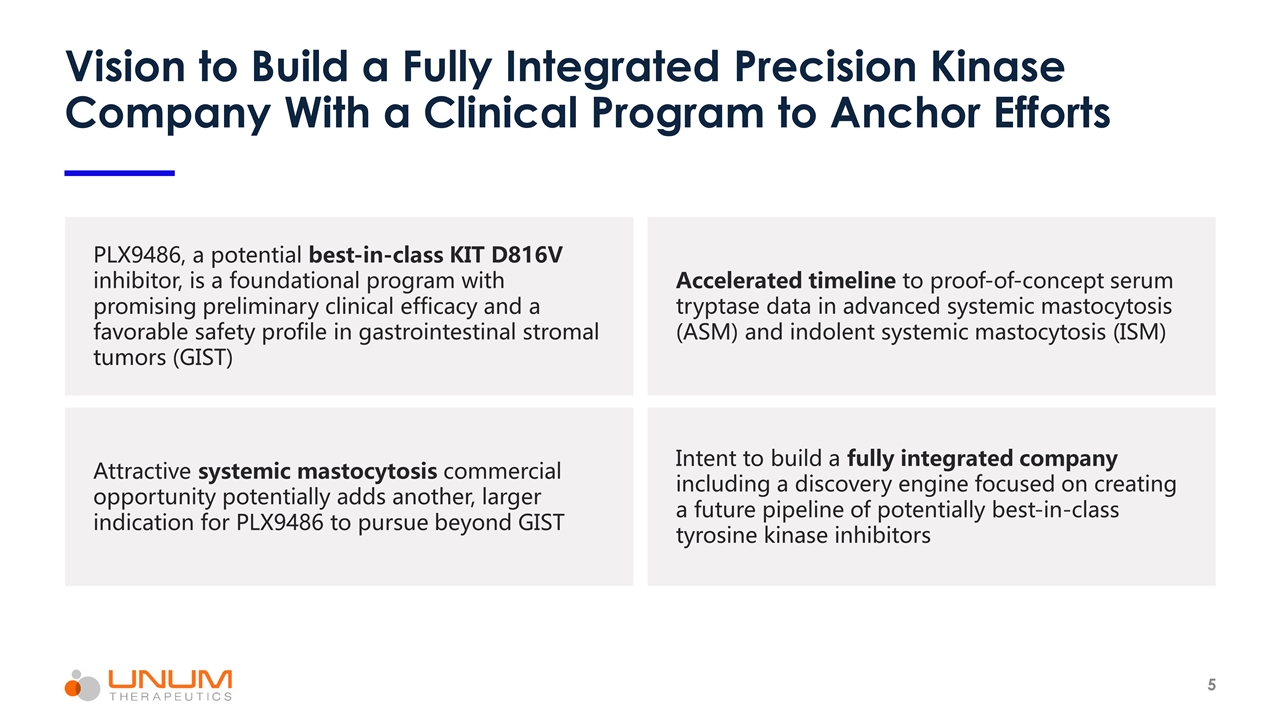
Vision to Build a Fully Integrated Precision Kinase Company With a Clinical Program to Anchor Efforts PLX9486, a potential best-in-class KIT D816V inhibitor, is a foundational program with promising preliminary clinical efficacy and a favorable safety profile in gastrointestinal stromal tumors (GIST) Accelerated timeline to proof-of-concept serum tryptase data in advanced systemic mastocytosis (ASM) and indolent systemic mastocytosis (ISM) Intent to build a fully integrated company including a discovery engine focused on creating a future pipeline of potentially best-in-class tyrosine kinase inhibitors Attractive systemic mastocytosis commercial opportunity potentially adds another, larger indication for PLX9486 to pursue beyond GIST
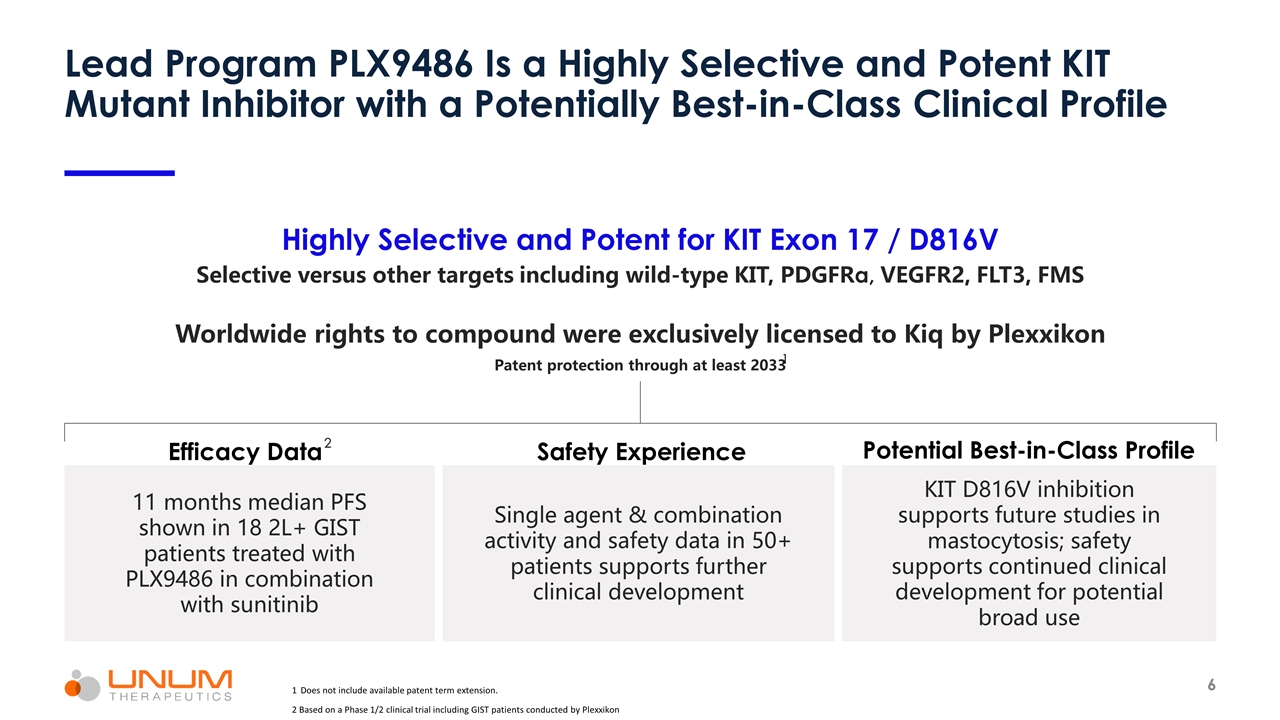
Lead Program PLX9486 Is a Highly Selective and Potent KIT Mutant Inhibitor with a Potentially Best-in-Class Clinical Profile Highly Selective and Potent for KIT Exon 17 / D816V 11 months median PFS shown in 18 2L+ GIST patients treated with PLX9486 in combination with sunitinib Single agent & combination activity and safety data in 50+ patients supports further clinical development KIT D816V inhibition supports future studies in mastocytosis; safety supports continued clinical development for potential broad use Selective versus other targets including wild-type KIT, PDGFRα, VEGFR2, FLT3, FMS Worldwide rights to compound were exclusively licensed to Kiq by Plexxikon Patent protection through at least 2033 Efficacy Data Safety Experience Potential Best-in-Class Profile 1 1 Does not include available patent term extension. 2 Based on a Phase 1/2 clinical trial including GIST patients conducted by Plexxikon 2
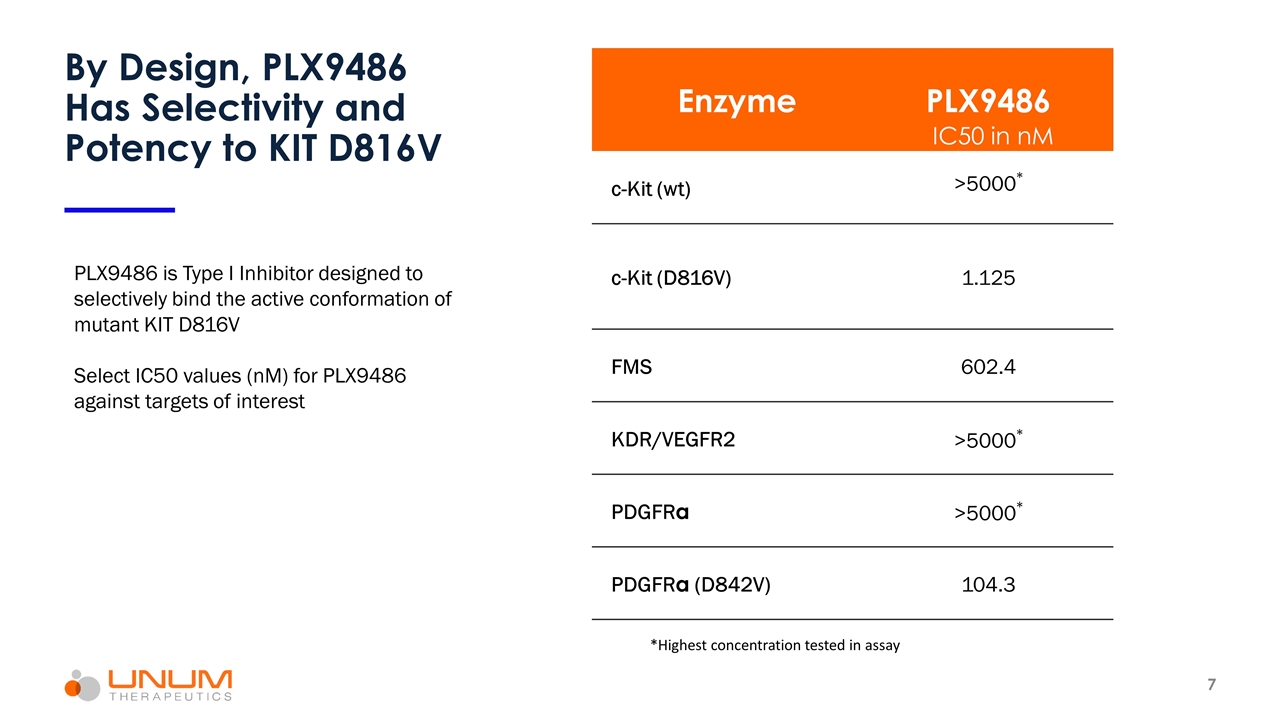
Enzyme PLX9486 c-Kit (wt) >5000* c-Kit (D816V) 1.125 FMS 602.4 KDR/VEGFR2 >5000* PDGFRα >5000* PDGFRα (D842V) 104.3 By Design, PLX9486 Has Selectivity and Potency to KIT D816V PLX9486 is Type I Inhibitor designed to selectively bind the active conformation of mutant KIT D816V Select IC50 values (nM) for PLX9486 against targets of interest *Highest concentration tested in assay IC50 in nM
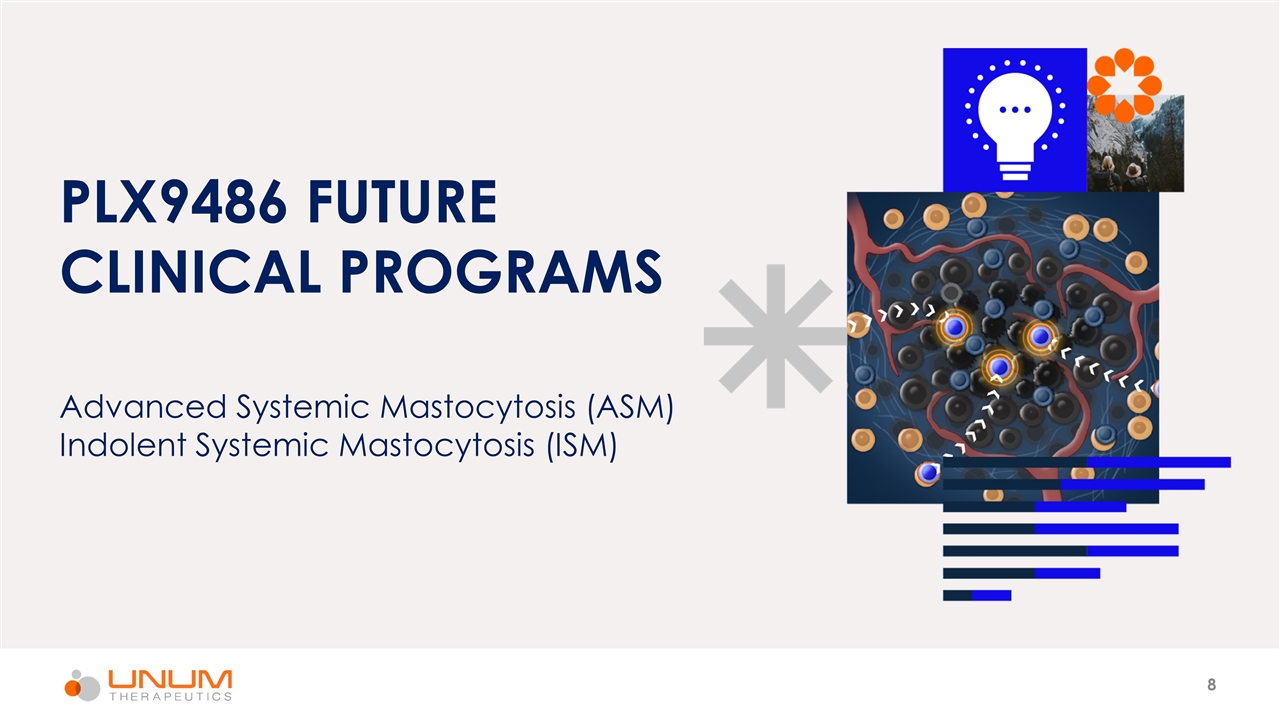
PLX9486 FUTURE CLINICAL PROGRAMS Advanced Systemic Mastocytosis (ASM) Indolent Systemic Mastocytosis (ISM)
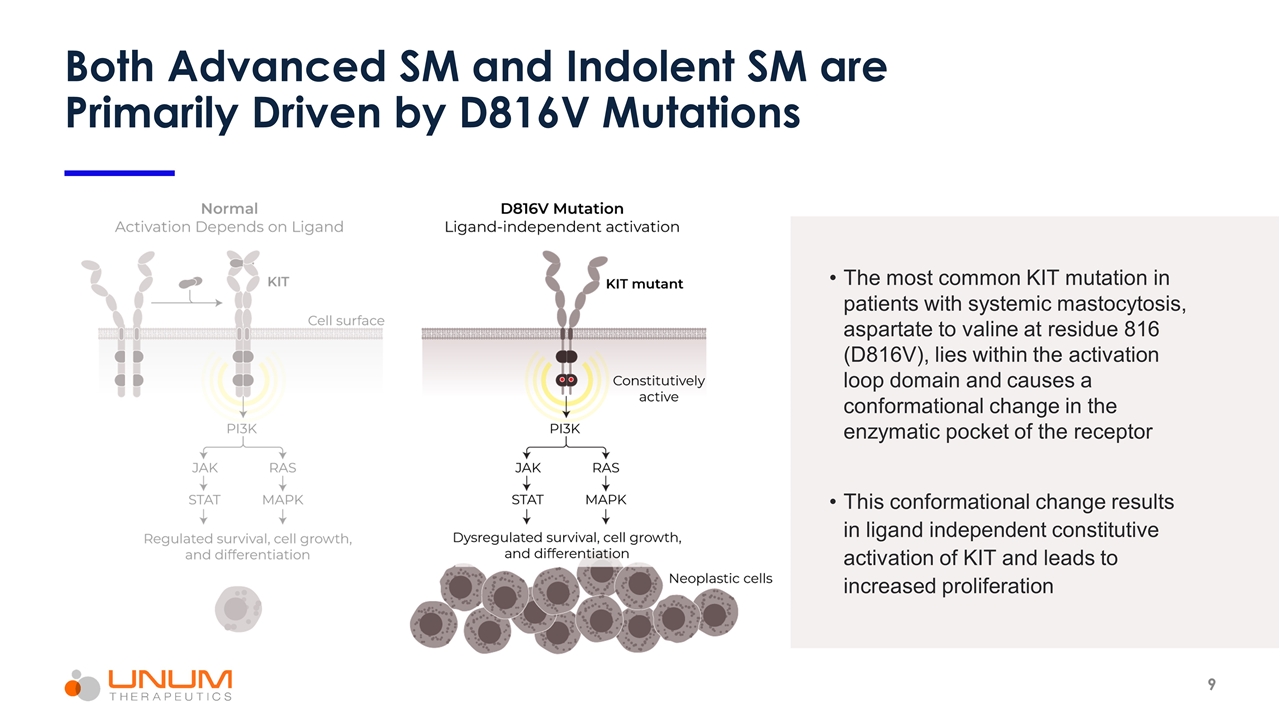
Both Advanced SM and Indolent SM are Primarily Driven by D816V Mutations The most common KIT mutation in patients with systemic mastocytosis, aspartate to valine at residue 816 (D816V), lies within the activation loop domain and causes a conformational change in the enzymatic pocket of the receptor This conformational change results in ligand independent constitutive activation of KIT and leads to increased proliferation
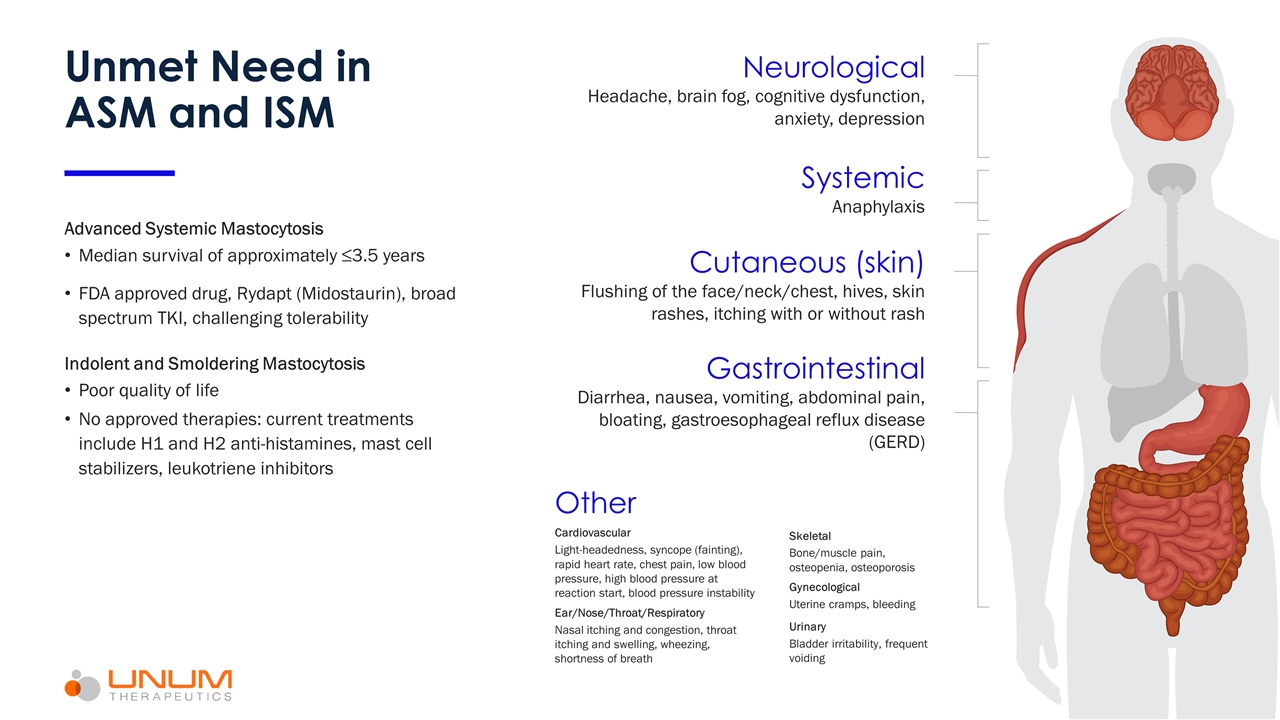
Advanced Systemic Mastocytosis Median survival of approximately ≤3.5 years FDA approved drug, Rydapt (Midostaurin), broad spectrum TKI, challenging tolerability Indolent and Smoldering Mastocytosis Poor quality of life No approved therapies: current treatments include H1 and H2 anti-histamines, mast cell stabilizers, leukotriene inhibitors Unmet Need in ASM and ISM Neurological Headache, brain fog, cognitive dysfunction, anxiety, depression Systemic Anaphylaxis Cutaneous (skin) Flushing of the face/neck/chest, hives, skin rashes, itching with or without rash Gastrointestinal Diarrhea, nausea, vomiting, abdominal pain, bloating, gastroesophageal reflux disease (GERD) Other Cardiovascular Light-headedness, syncope (fainting), rapid heart rate, chest pain, low blood pressure, high blood pressure at reaction start, blood pressure instability Ear/Nose/Throat/Respiratory Nasal itching and congestion, throat itching and swelling, wheezing, shortness of breath Skeletal Bone/muscle pain, osteopenia, osteoporosis Gynecological Uterine cramps, bleeding Urinary Bladder irritability, frequent voiding
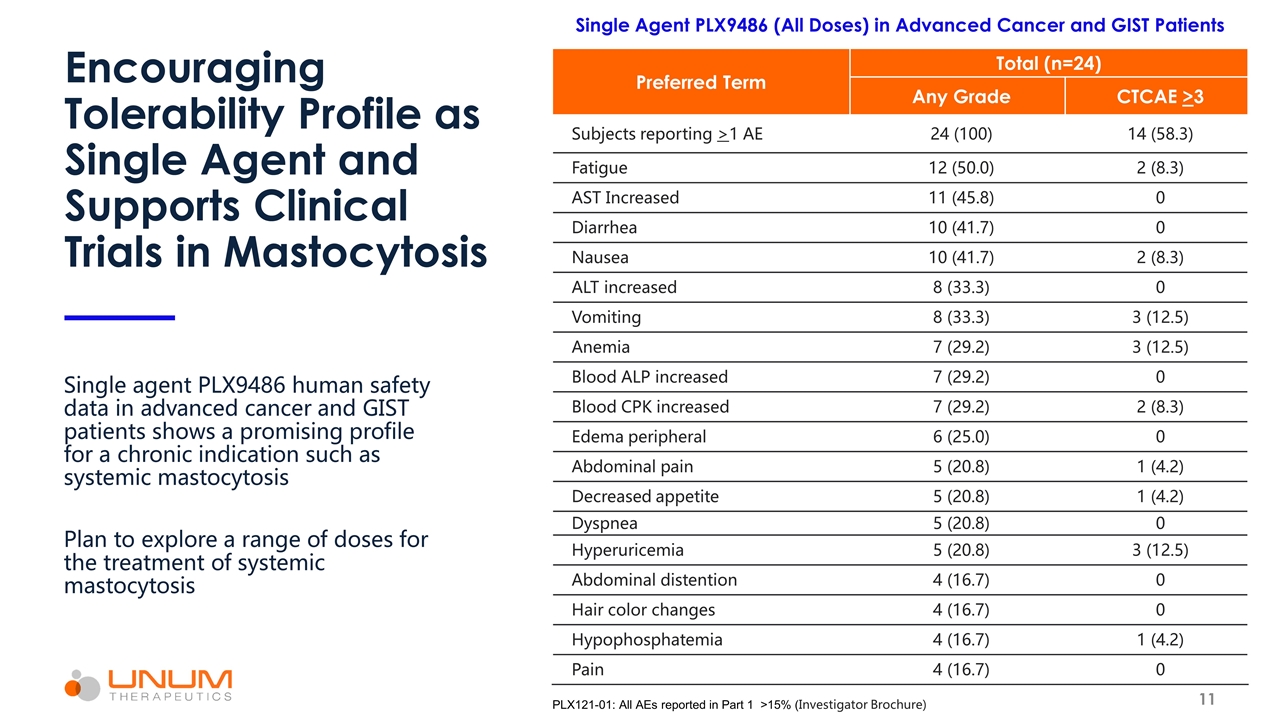
Encouraging Tolerability Profile as Single Agent and Supports Clinical Trials in Mastocytosis Single Agent PLX9486 (All Doses) in Advanced Cancer and GIST Patients Single agent PLX9486 human safety data in advanced cancer and GIST patients shows a promising profile for a chronic indication such as systemic mastocytosis Plan to explore a range of doses for the treatment of systemic mastocytosis Preferred Term Total (n=24) Any Grade CTCAE >3 Subjects reporting >1 AE 24 (100) 14 (58.3) Fatigue 12 (50.0) 2 (8.3) AST Increased 11 (45.8) 0 Diarrhea 10 (41.7) 0 Nausea 10 (41.7) 2 (8.3) ALT increased 8 (33.3) 0 Vomiting 8 (33.3) 3 (12.5) Anemia 7 (29.2) 3 (12.5) Blood ALP increased 7 (29.2) 0 Blood CPK increased 7 (29.2) 2 (8.3) Edema peripheral 6 (25.0) 0 Abdominal pain 5 (20.8) 1 (4.2) Decreased appetite 5 (20.8) 1 (4.2) Dyspnea 5 (20.8) 0 Hyperuricemia 5 (20.8) 3 (12.5) Abdominal distention 4 (16.7) 0 Hair color changes 4 (16.7) 0 Hypophosphatemia 4 (16.7) 1 (4.2) Pain 4 (16.7) 0 PLX121-01: All AEs reported in Part 1 >15% (Investigator Brochure)
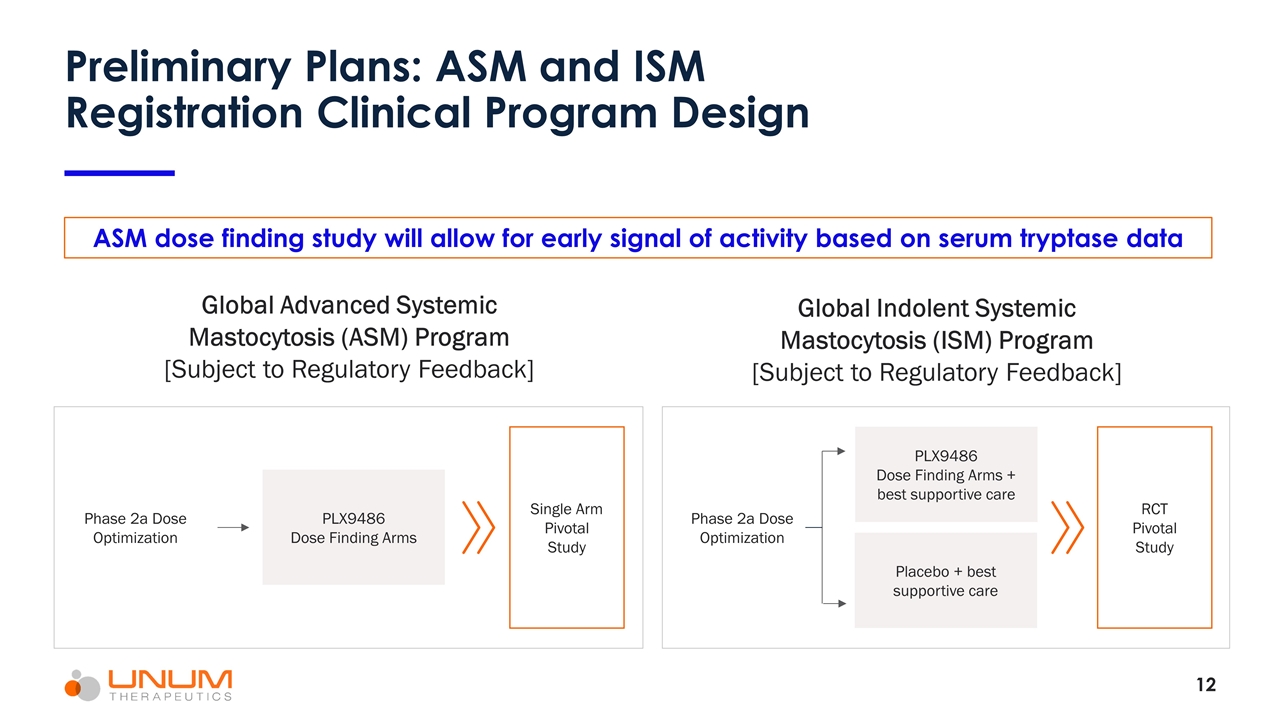
Preliminary Plans: ASM and ISM Registration Clinical Program Design Global Advanced Systemic Mastocytosis (ASM) Program [Subject to Regulatory Feedback] Global Indolent Systemic Mastocytosis (ISM) Program [Subject to Regulatory Feedback] PLX9486 Dose Finding Arms Single Arm Pivotal Study Phase 2a Dose Optimization PLX9486 Dose Finding Arms + best supportive care Placebo + best supportive care Phase 2a Dose Optimization RCT Pivotal Study ASM dose finding study will allow for early signal of activity based on serum tryptase data
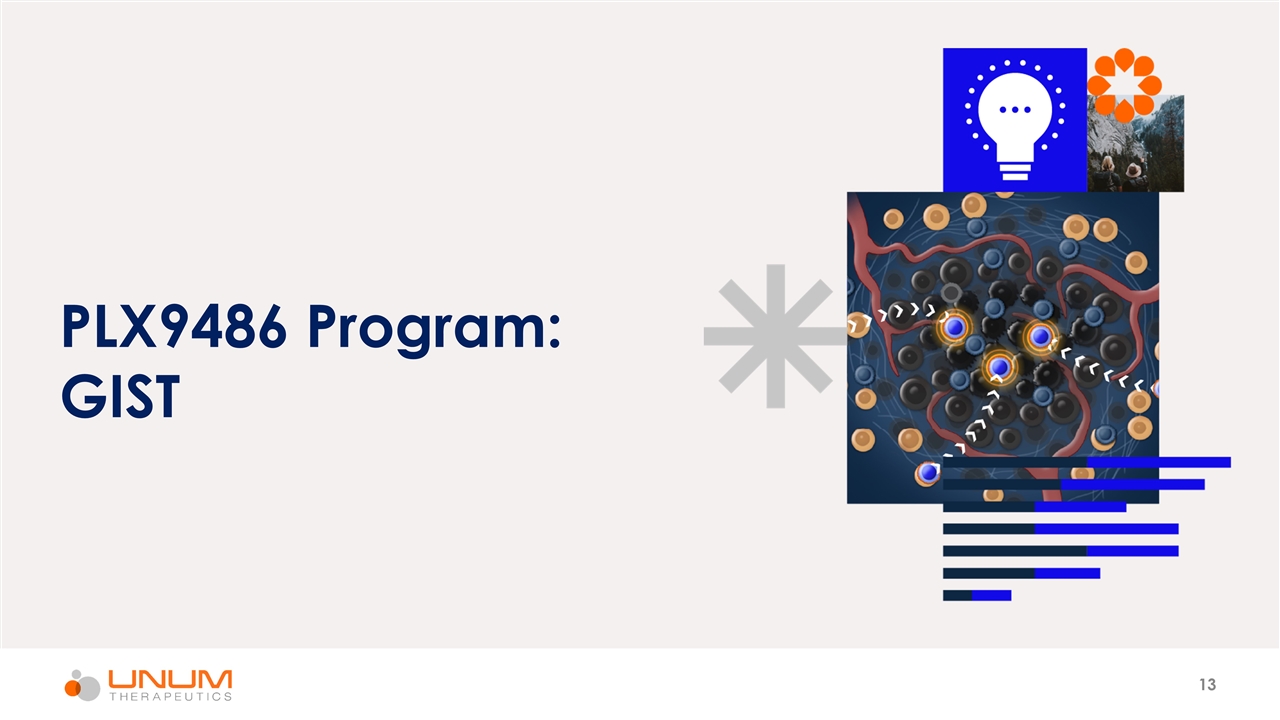
PLX9486 Program: GIST
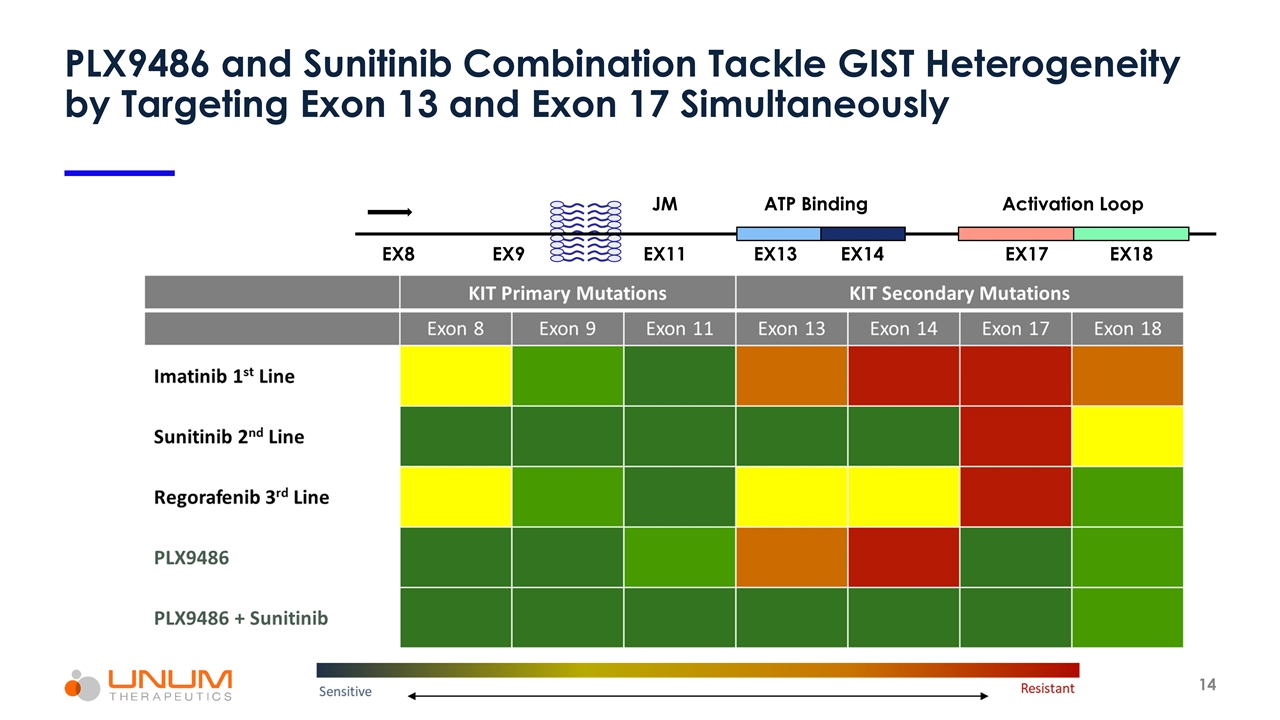
PLX9486 and Sunitinib Combination Tackle GIST Heterogeneity by Targeting Exon 13 and Exon 17 Simultaneously EX8 EX9 EX11 EX13 EX14 EX18 EX17 JM ATP Binding Activation Loop
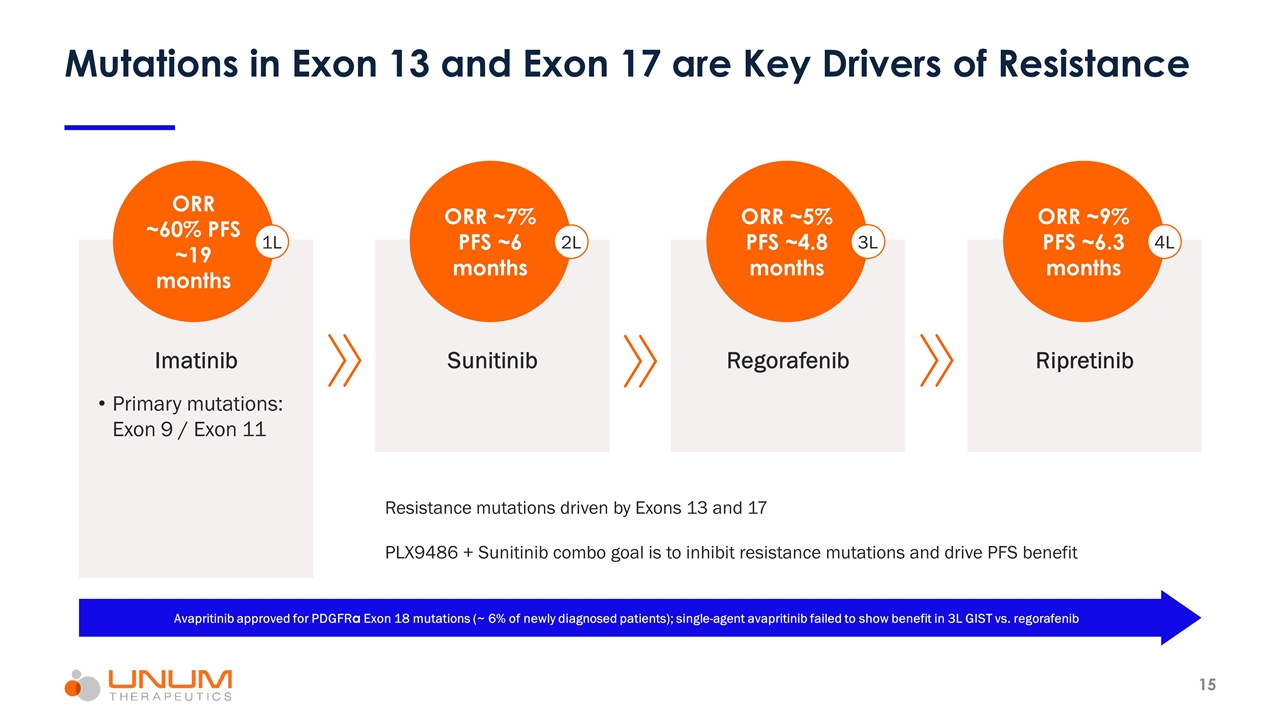
Mutations in Exon 13 and Exon 17 are Key Drivers of Resistance Imatinib Primary mutations: Exon 9 / Exon 11 Sunitinib Regorafenib Ripretinib ORR ~60% PFS ~19 months ORR ~7% PFS ~6 months ORR ~5% PFS ~4.8 months ORR ~9% PFS ~6.3 months 1L 2L 3L 4L Avapritinib approved for PDGFRα Exon 18 mutations (~ 6% of newly diagnosed patients); single-agent avapritinib failed to show benefit in 3L GIST vs. regorafenib Resistance mutations driven by Exons 13 and 17 PLX9486 + Sunitinib combo goal is to inhibit resistance mutations and drive PFS benefit
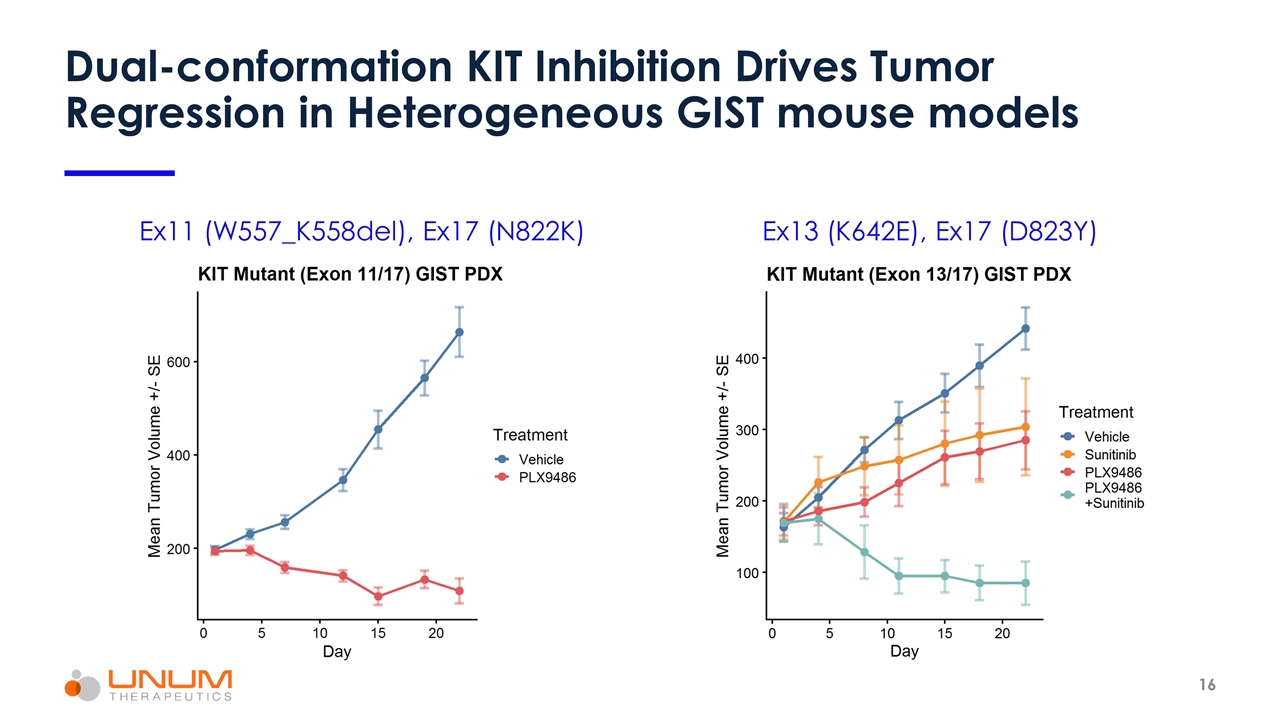
Dual-conformation KIT Inhibition Drives Tumor Regression in Heterogeneous GIST mouse models Ex11 (W557_K558del), Ex17 (N822K) Ex13 (K642E), Ex17 (D823Y)
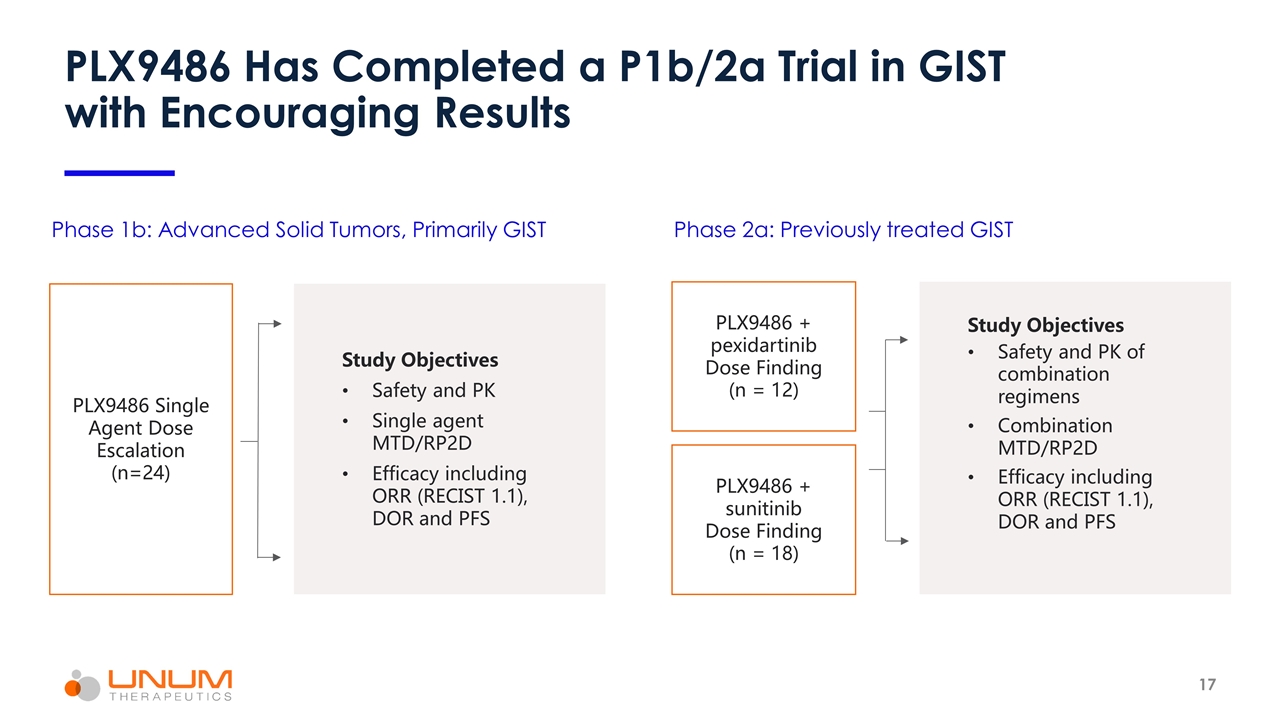
PLX9486 Has Completed a P1b/2a Trial in GIST with Encouraging Results Phase 1b: Advanced Solid Tumors, Primarily GIST PLX9486 Single Agent Dose Escalation (n=24) Study Objectives Safety and PK Single agent MTD/RP2D Efficacy including ORR (RECIST 1.1), DOR and PFS Phase 2a: Previously treated GIST PLX9486 + pexidartinib Dose Finding (n = 12) PLX9486 + sunitinib Dose Finding (n = 18) Study Objectives Safety and PK of combination regimens Combination MTD/RP2D Efficacy including ORR (RECIST 1.1), DOR and PFS
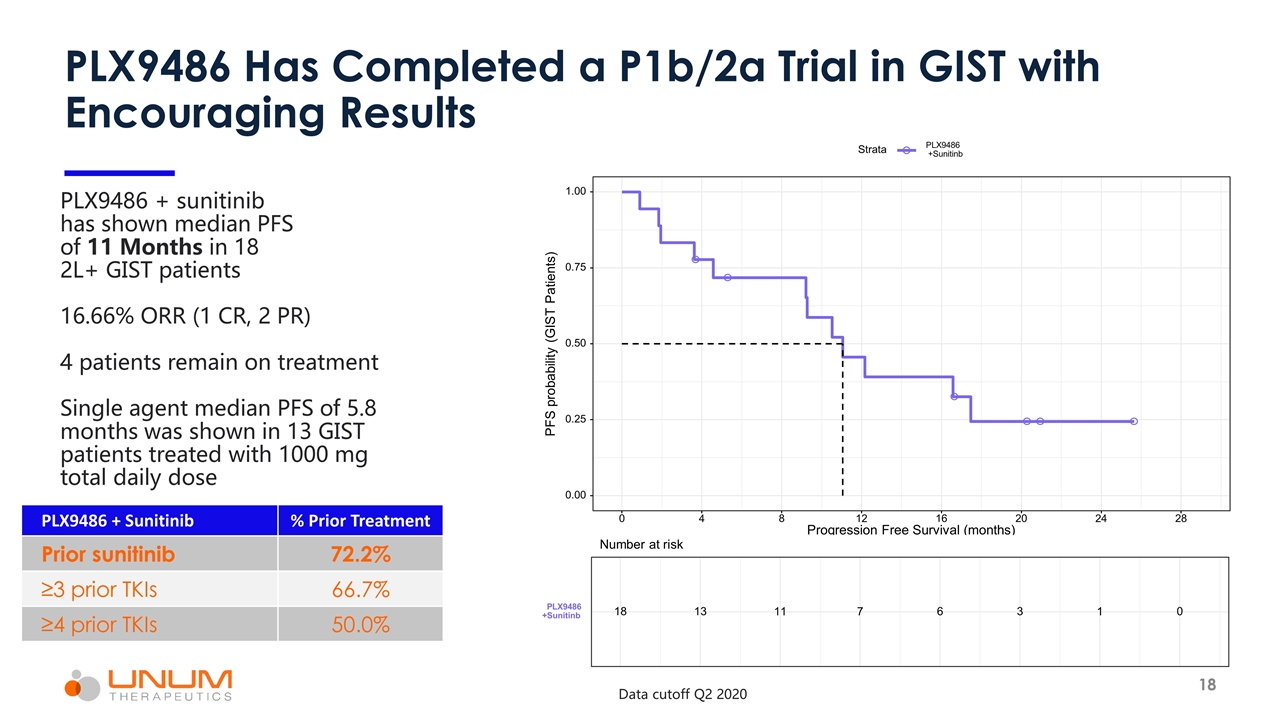
PLX9486 Has Completed a P1b/2a Trial in GIST with Encouraging Results 0.00 0.25 0.50 0.75 1.00 0 4 8 12 16 20 24 28 Progression Free Survival (months) PFS probability (GIST Patients) Strata PLX9486 +Sunitinb 18 13 11 7 6 3 1 0 PLX9486 +Sunitinb Number at risk PLX9486 + sunitinib has shown median PFS of 11 Months in 18 2L+ GIST patients 16.66% ORR (1 CR, 2 PR) 4 patients remain on treatment Single agent median PFS of 5.8 months was shown in 13 GIST patients treated with 1000 mg total daily dose Data cutoff Q2 2020 PLX9486 + Sunitinib % Prior Treatment Prior sunitinib 72.2% ≥3 prior TKIs 66.7% ≥4 prior TKIs 50.0%
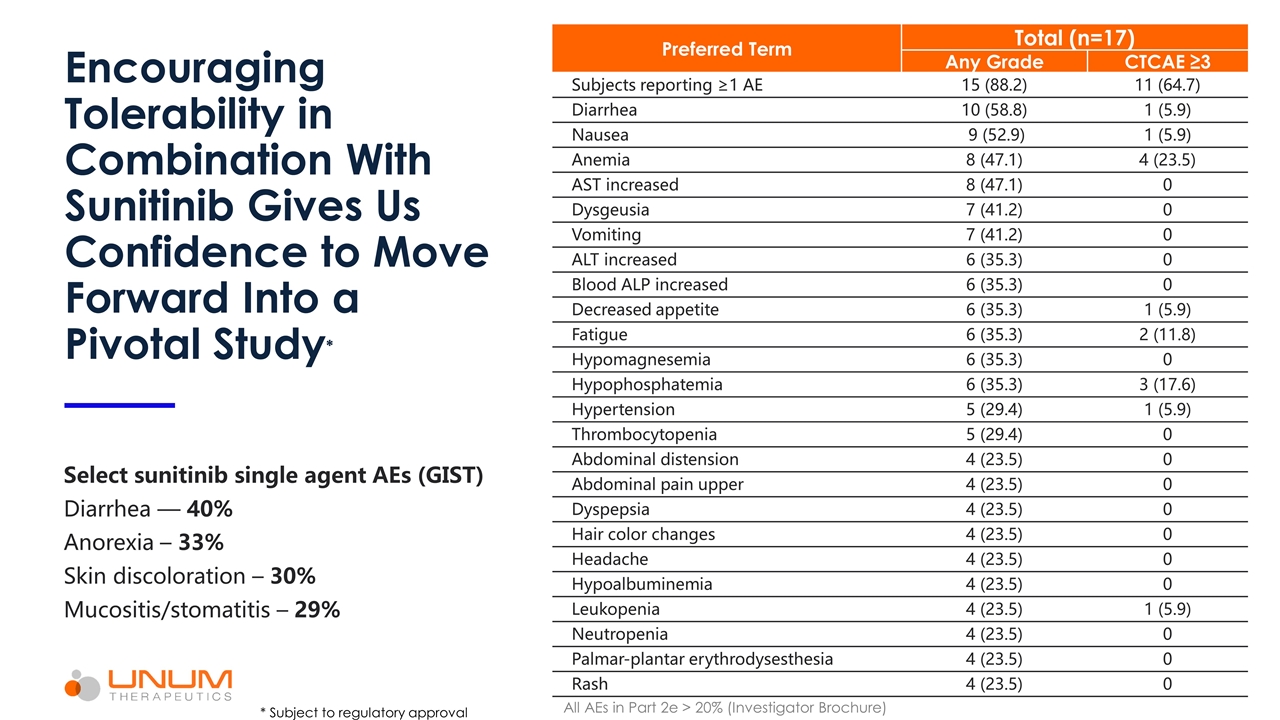
Encouraging Tolerability in Combination With Sunitinib Gives Us Confidence to Move Forward Into a Pivotal Study* Select sunitinib single agent AEs (GIST) Diarrhea — 40% Anorexia – 33% Skin discoloration – 30% Mucositis/stomatitis – 29% Preferred Term Total (n=17) Any Grade CTCAE ≥3 Subjects reporting ≥1 AE 15 (88.2) 11 (64.7) Diarrhea 10 (58.8) 1 (5.9) Nausea 9 (52.9) 1 (5.9) Anemia 8 (47.1) 4 (23.5) AST increased 8 (47.1) 0 Dysgeusia 7 (41.2) 0 Vomiting 7 (41.2) 0 ALT increased 6 (35.3) 0 Blood ALP increased 6 (35.3) 0 Decreased appetite 6 (35.3) 1 (5.9) Fatigue 6 (35.3) 2 (11.8) Hypomagnesemia 6 (35.3) 0 Hypophosphatemia 6 (35.3) 3 (17.6) Hypertension 5 (29.4) 1 (5.9) Thrombocytopenia 5 (29.4) 0 Abdominal distension 4 (23.5) 0 Abdominal pain upper 4 (23.5) 0 Dyspepsia 4 (23.5) 0 Hair color changes 4 (23.5) 0 Headache 4 (23.5) 0 Hypoalbuminemia 4 (23.5) 0 Leukopenia 4 (23.5) 1 (5.9) Neutropenia 4 (23.5) 0 Palmar-plantar erythrodysesthesia 4 (23.5) 0 Rash 4 (23.5) 0 All AEs in Part 2e > 20% (Investigator Brochure) * Subject to regulatory approval
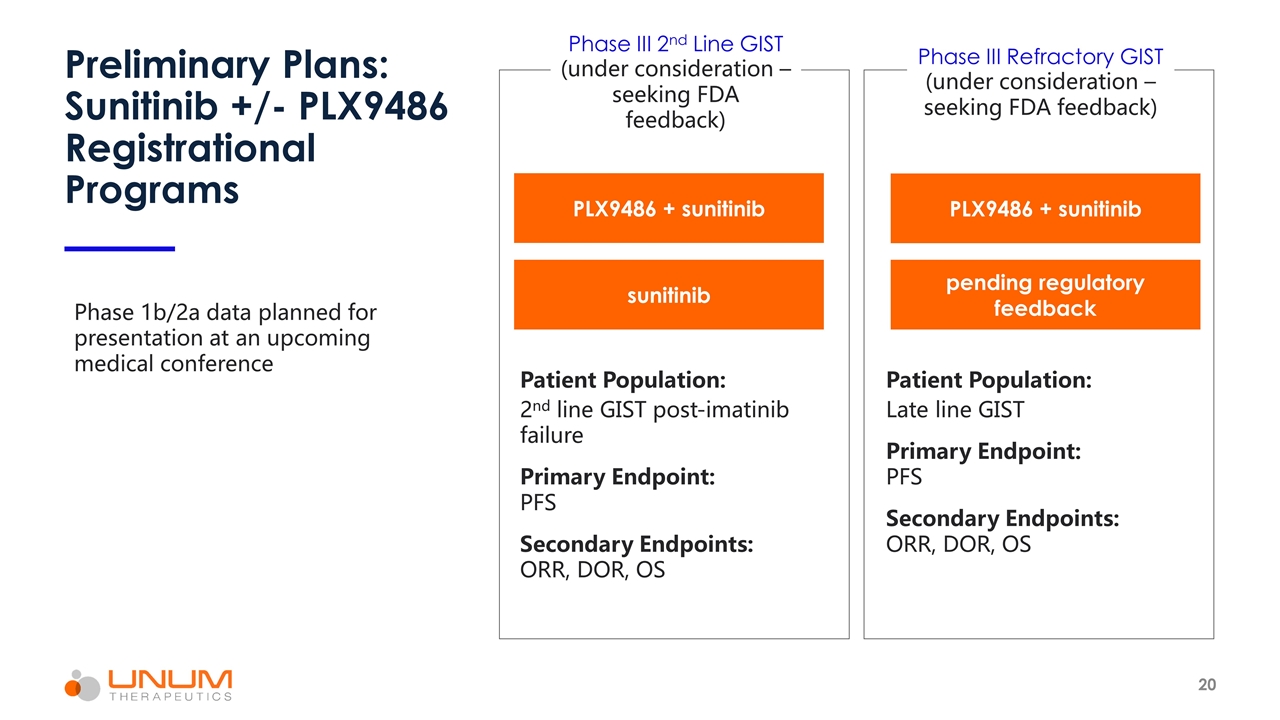
Preliminary Plans: Sunitinib +/- PLX9486 Registrational Programs Phase 1b/2a data planned for presentation at an upcoming medical conference PLX9486 + sunitinib Phase III Refractory GIST (under consideration – seeking FDA feedback) Patient Population: Late line GIST Primary Endpoint: PFS Secondary Endpoints: ORR, DOR, OS PLX9486 + sunitinib Patient Population: 2nd line GIST post-imatinib failure Primary Endpoint: PFS Secondary Endpoints: ORR, DOR, OS Phase III 2nd Line GIST (under consideration – seeking FDA feedback) sunitinib pending regulatory feedback
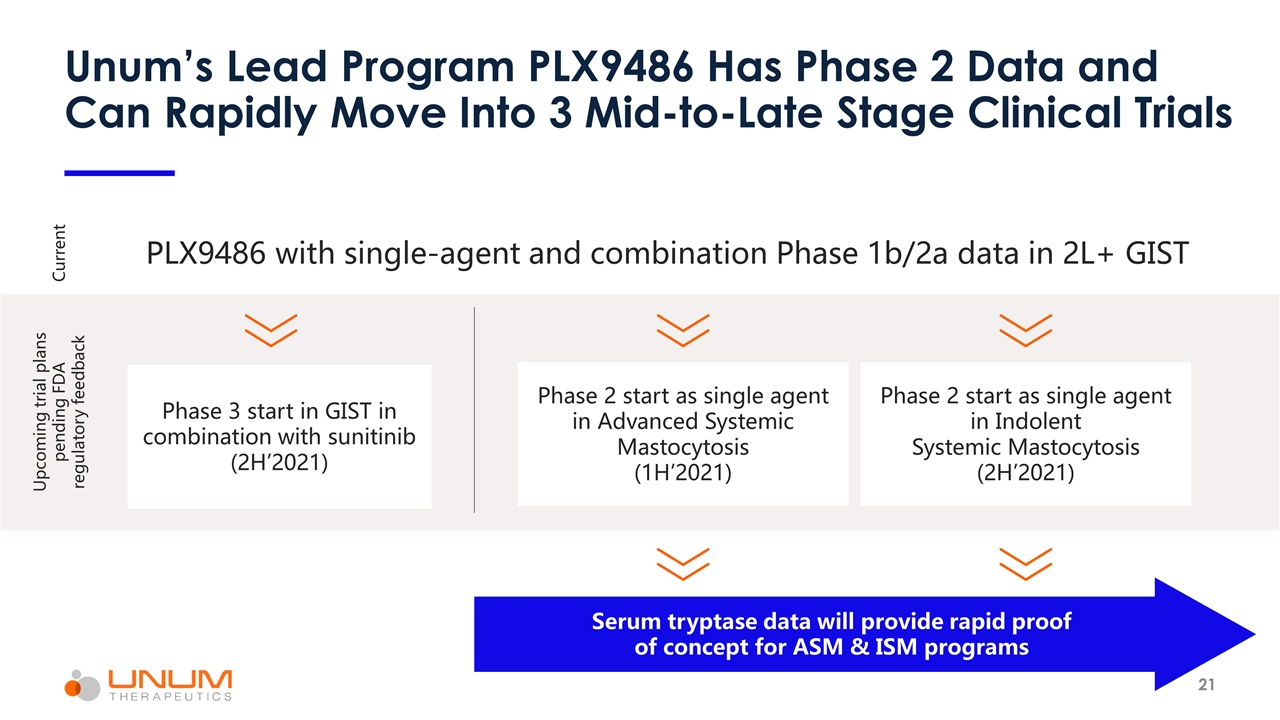
Unum’s Lead Program PLX9486 Has Phase 2 Data and Can Rapidly Move Into 3 Mid-to-Late Stage Clinical Trials Phase 3 start in GIST in combination with sunitinib (2H’2021) Phase 2 start as single agent in Indolent Systemic Mastocytosis (2H’2021) Phase 2 start as single agent in Advanced Systemic Mastocytosis (1H’2021) PLX9486 with single-agent and combination Phase 1b/2a data in 2L+ GIST Serum tryptase data will provide rapid proof of concept for ASM & ISM programs Current Upcoming trial plans pending FDA regulatory feedback

Thank you unumrx.com Unum Therapeutics Inc. | 200 Cambridge Park Drive Suite 3100 | Cambridge, MA 02140 USA





















